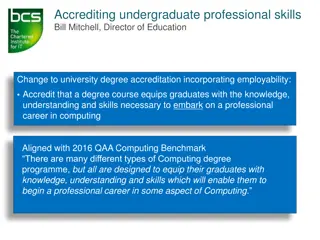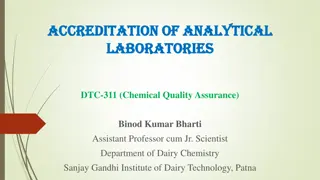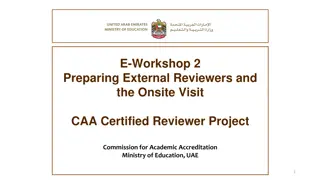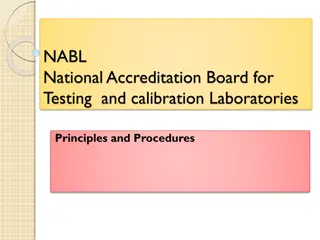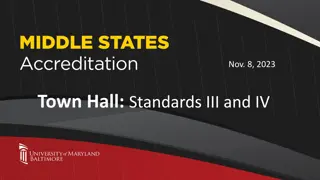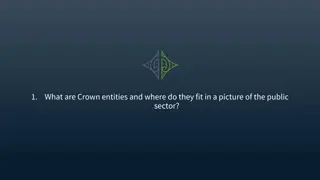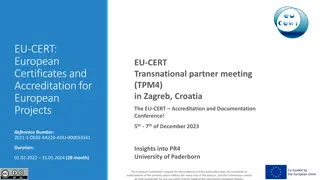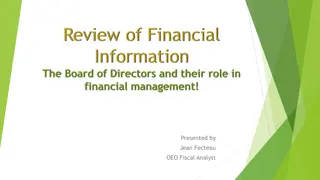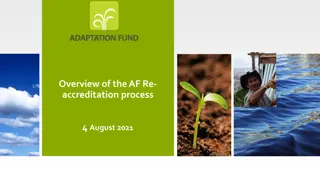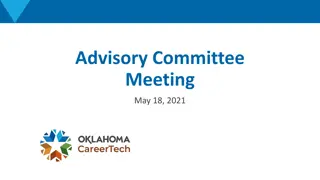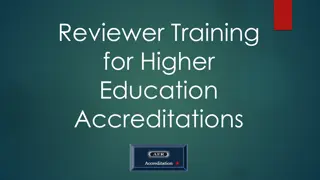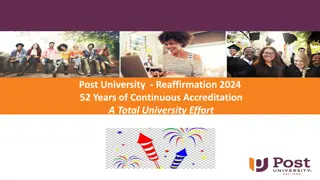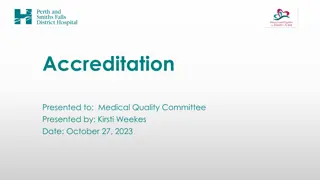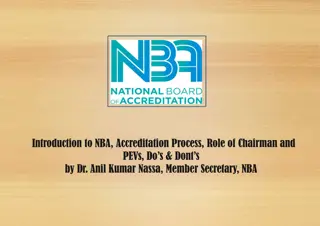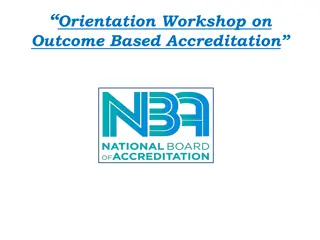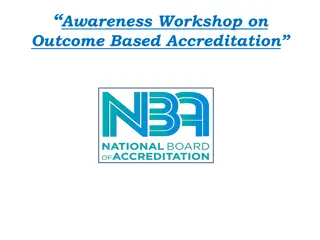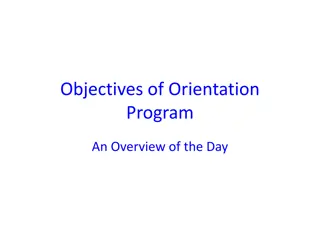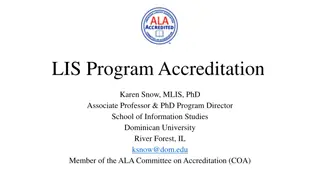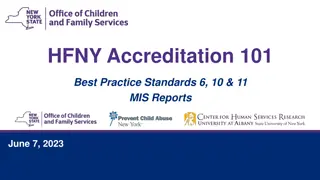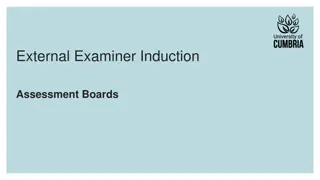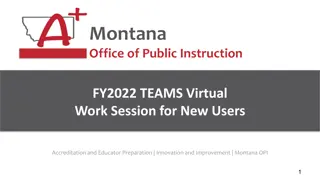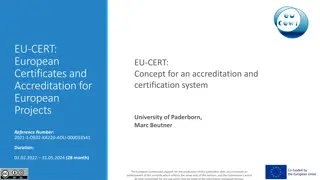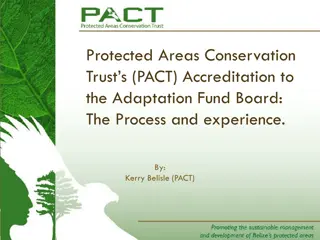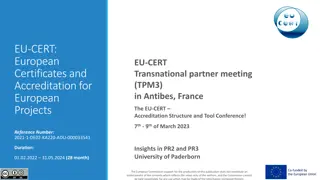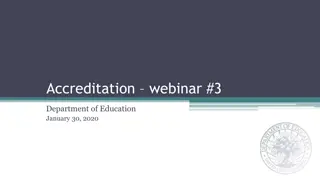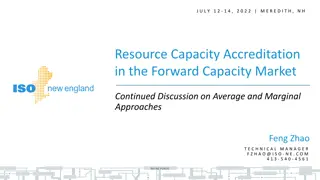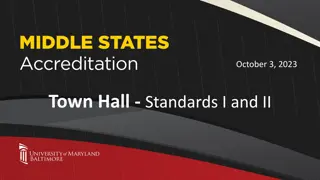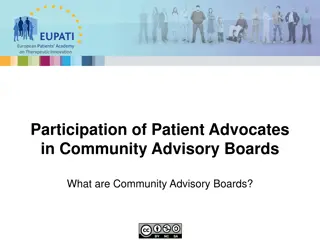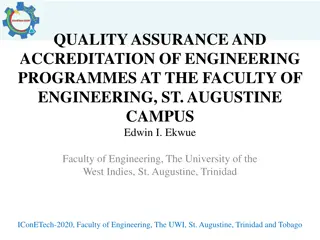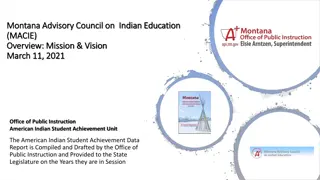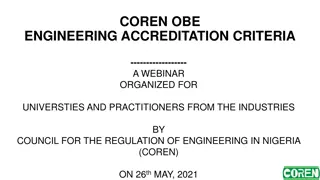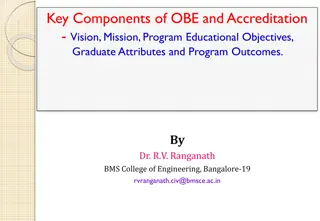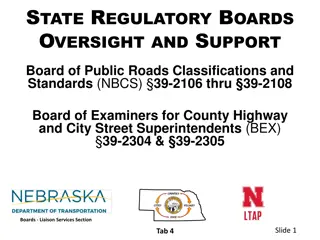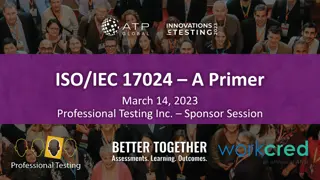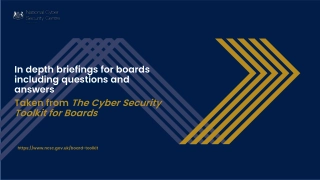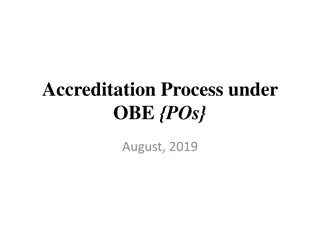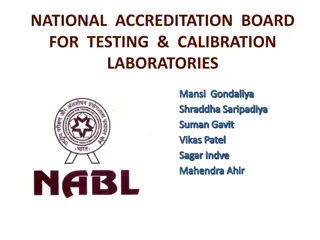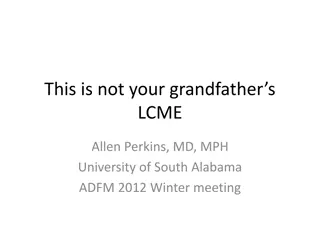Understanding Advisory Boards and ABET Accreditation History
Explore the roles of advisory boards in honoring alumni, raising funds, and evaluating academic programs. Delve into the history of ABET accreditation, from its founding in 1932 to the adoption of the Engineering Criteria 2000, focusing on outcomes and continuous improvement.
Download Presentation

Please find below an Image/Link to download the presentation.
The content on the website is provided AS IS for your information and personal use only. It may not be sold, licensed, or shared on other websites without obtaining consent from the author. Download presentation by click this link. If you encounter any issues during the download, it is possible that the publisher has removed the file from their server.
E N D
Presentation Transcript
Advisory Boards The Good, The Bad, and The Reality Ron Smelser Professor and Senior Associate Dean The William State Lee College of Engineering
Advisory Boards History Honor Alumni and Raise Funds for College Evaluate and Advise Programs Evaluate Curriculum and Graduates
Advisory Boards Present Honor Alumni and Raise Funds for College Evaluate and Advise Programs Evaluate Curriculum and Graduates
ABET A Four Letter Word Founded in 1932 Engineers Council for Professional Development Seven Founding Societies ASCE, AIME, ASME, IEEE, ASEE, AIChE, NCEES Evaluated First Program in 1936 Evaluated First Technology Program 1946 Accreditation Focused on Curriculum
ABET History (contd) 1980 Accreditation Board for Engineering and Technology 1985 Computer Sciences Accreditation Board 2005 Renamed to ABET 1997 Recognized by Council for Higher Education Accreditation Accredits Over 3100 Programs at More Than 600 Colleges and Universities Worldwide
ABET History (contd) 1997 Engineering Criteria 2000 (EC2000) Adopted Major Shift in Evaluation Process Focuses on Outcomes and Learning not Curriculum Continuous Improvement Tied to Specific Goals and Missions of the Colleges and Programs Fostering Innovation Rather than Stifling It Responding to Industry Concerns
EC2000 Accreditation Process Program Defined Mission and Vision Program Educational Objectives What Graduates Should be Doing 3-5 Years Out Set and Reviewed in Conjunction with Program Identnfied Constituencies, Employers, Students, Faculty, Student Outcomes ABET (a) (k) and (l), (m), (n), (o) Measures of What Students Learn
EC2000 Accreditation Process (contd) Continuous Improvement Process Data Driven from Student Outcomes Alumni and Employer Input Anecdotal Information Qualified and Adequate Faculty Adequate Facilities
Program Educational Objectives Example Developed by the Program Our graduates will apply their knowledge to areas beyond their coursework, enabling them to succeed as engineers in: society, graduate or professional studies, and lifelong learning. Our graduates will contribute to safety and make ethical engineering and societal decisions. Our graduates will successfully contribute to the design, manufacture, implementation and management of engineering systems.
Program Educational Objectives Example (cont d) Our graduates, equipped with strong engineering fundamentals, will have the flexibility and competence to adapt in a changing world. Our graduates will be innovative and able to develop and communicate ideas and solutions, either as effective technical leaders, team leaders, or team members.
Advisory Boards College Advisory Board Broad Cross-section of Alumni and Employers Typically Meet Twice a Year Review College Progress and Department Objectives
Advisory Boards (contd) Departmental Advisory Board Broad Cross-section of Alumni and Employers Typically Meet Two or Three Times a Year Review Departmental Progress Program Educational Objectives Departmental Curriculum
EC2000 Review Process Program Review Conducted by ABET Team Written Self-Study Summer Prior to Visit Onsite Team Visit Fall Team Composition Team Chair Society Representative to ABET Board Team Members Assigned by Professional Society Visit Report Edited Twice for Consistency Final Accreditation Recommendation by Board
ABET in The William States Lee College of Engineering Engineering Programs Accredited 1974 Engineering Analysis and Design (1987) Engineering Science, Mechanics, and Materials (1987) Urban and Environmental Engineering (1986) EC2000 Continuous Improvement Implemented before ABET Driven by Bill Lee s Leadership of College Advisory Board Process Continues Today
ABET in The William States Lee College of Engineering PRogram OBjective Evaluation (PROBE) Review of Program Educational Objectives by the Constituent Groups for each Program Assessment and Improvement Meetings (AIM) College Senior Staff Meet to Review Strategic Initiatives for the College and the Programs Strategic Planning and Assessment Resource Team (SPART) Aid in Assessment Process
ABET in The William States Lee College of Engineering (cont d) Engineering Undergraduate Programs Accredited Engineering Technology Undergraduate Programs Accredited Fire Safety Engineering Technology In Process Construction Management Program Accredited Under Two Commissions Graduate Programs Can Be Accredited
ABET in The William States Lee College of Engineering (cont d) Visited Fall 2016 Accredited Through September 2023
ABET in The William States Lee College of Engineering (cont d) We Have Met ABET, and It is Us. We have met the enemy, and they are ours Oliver Hazard Perry, the Battle of Lake Erie, 1813.
ABET in The William States Lee College of Engineering (cont d) QUESTIONS?


